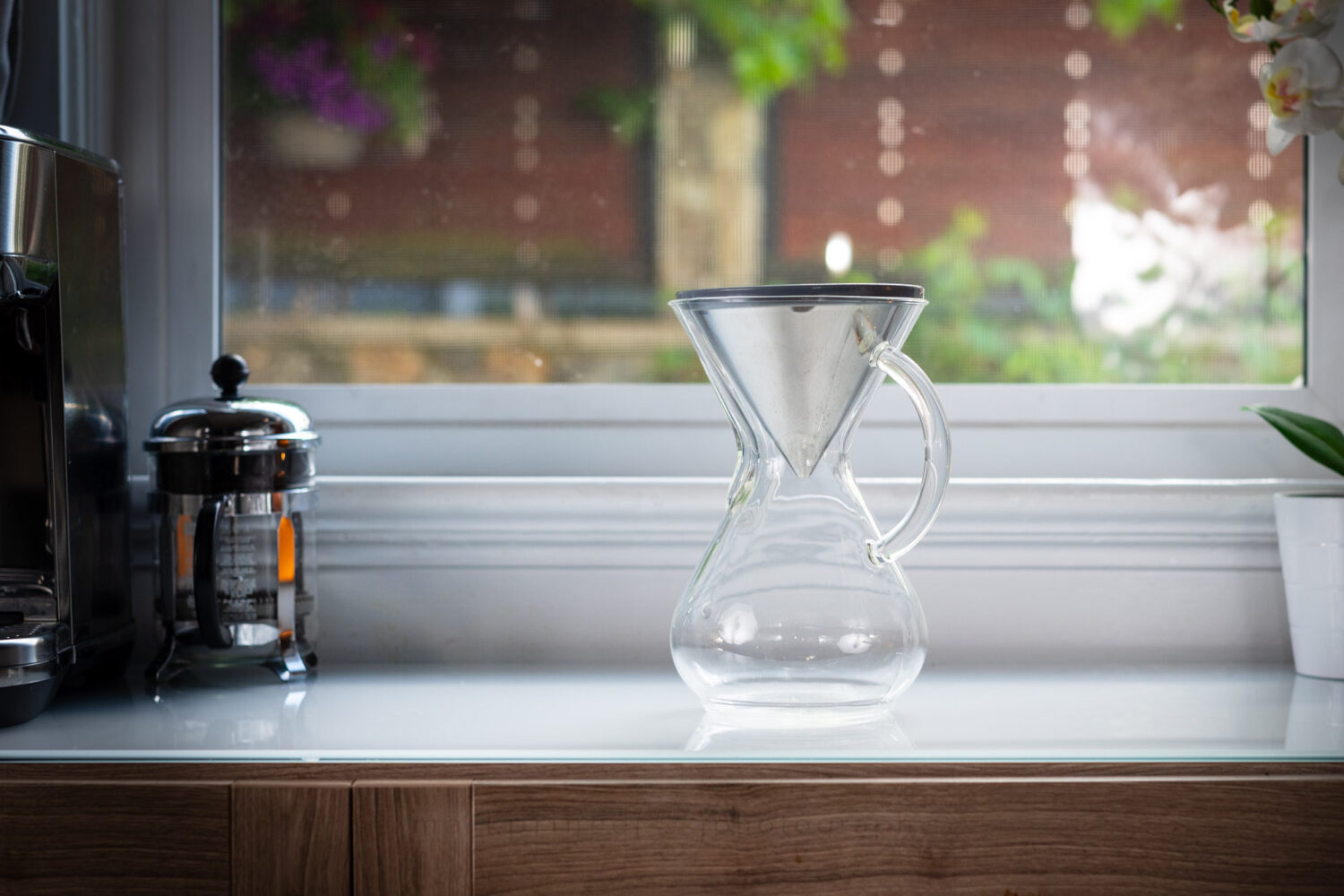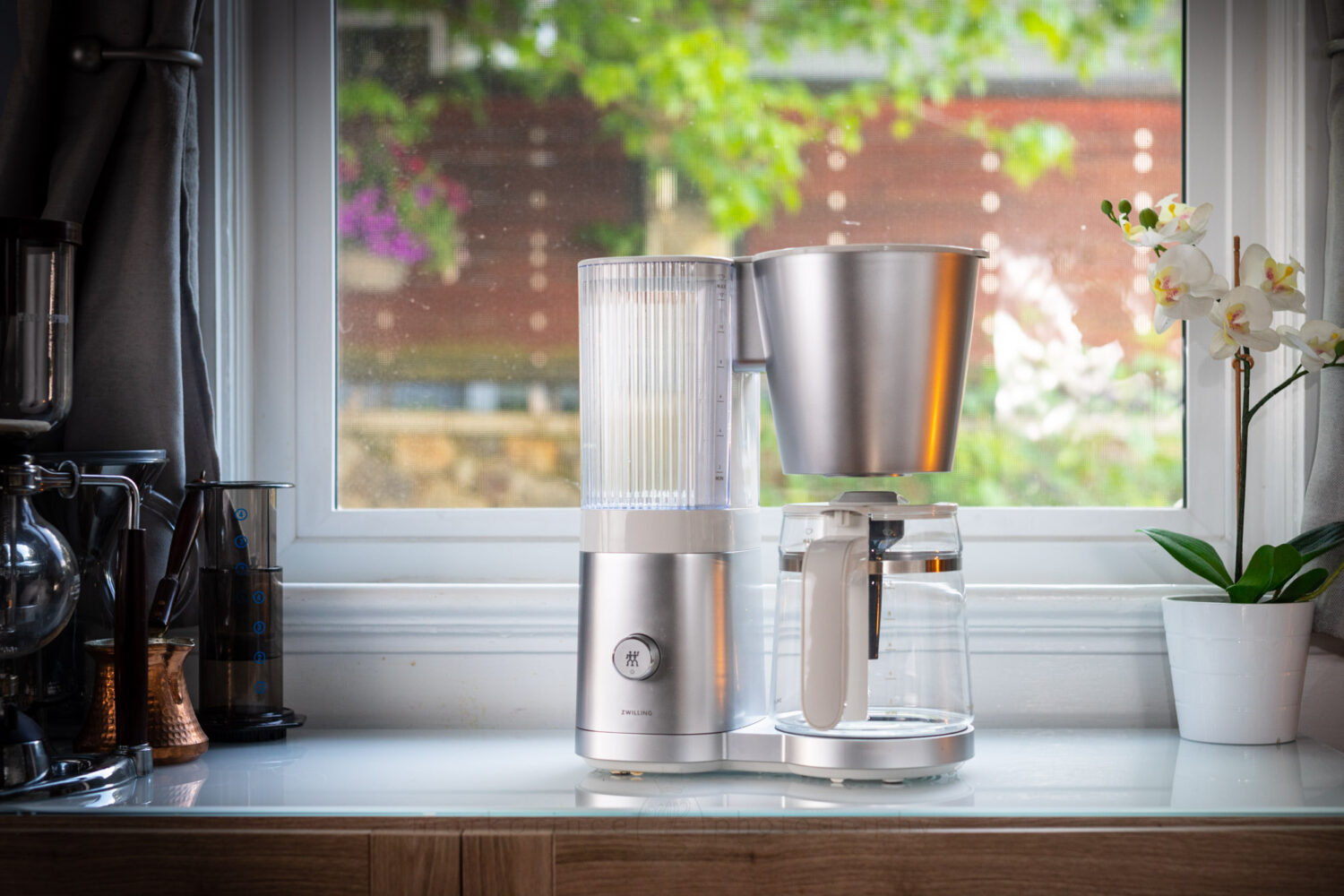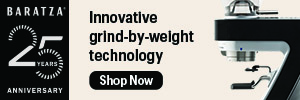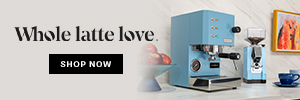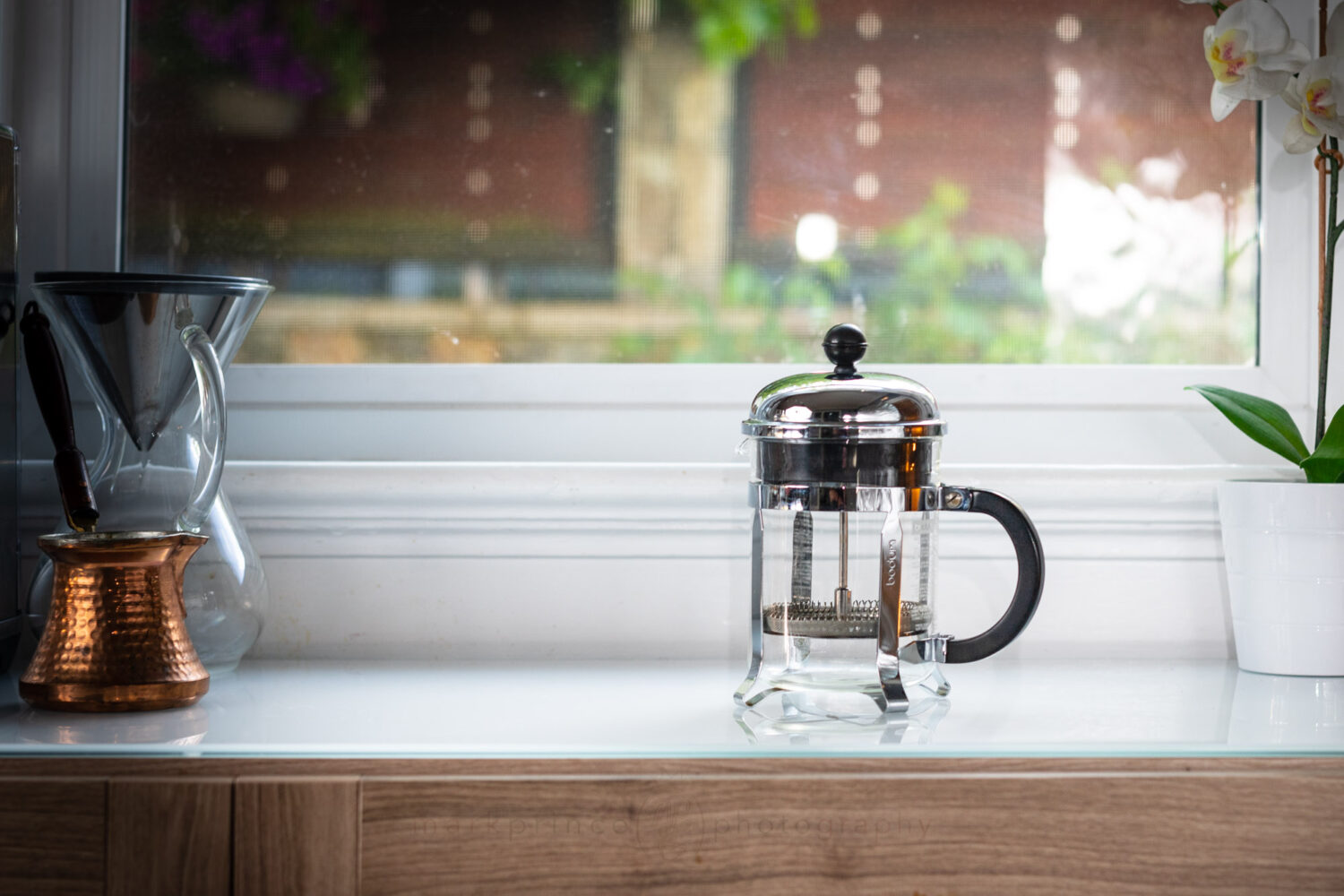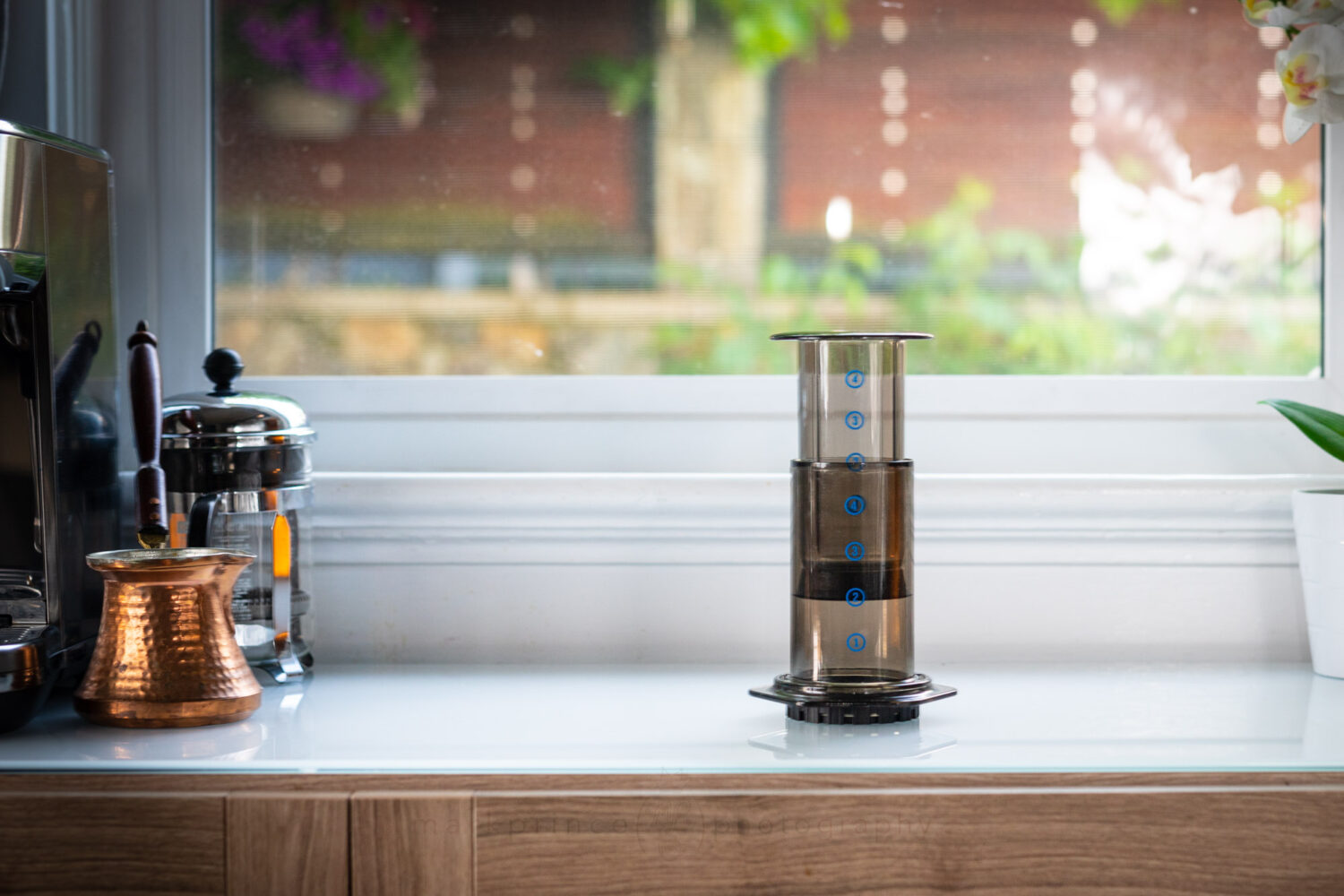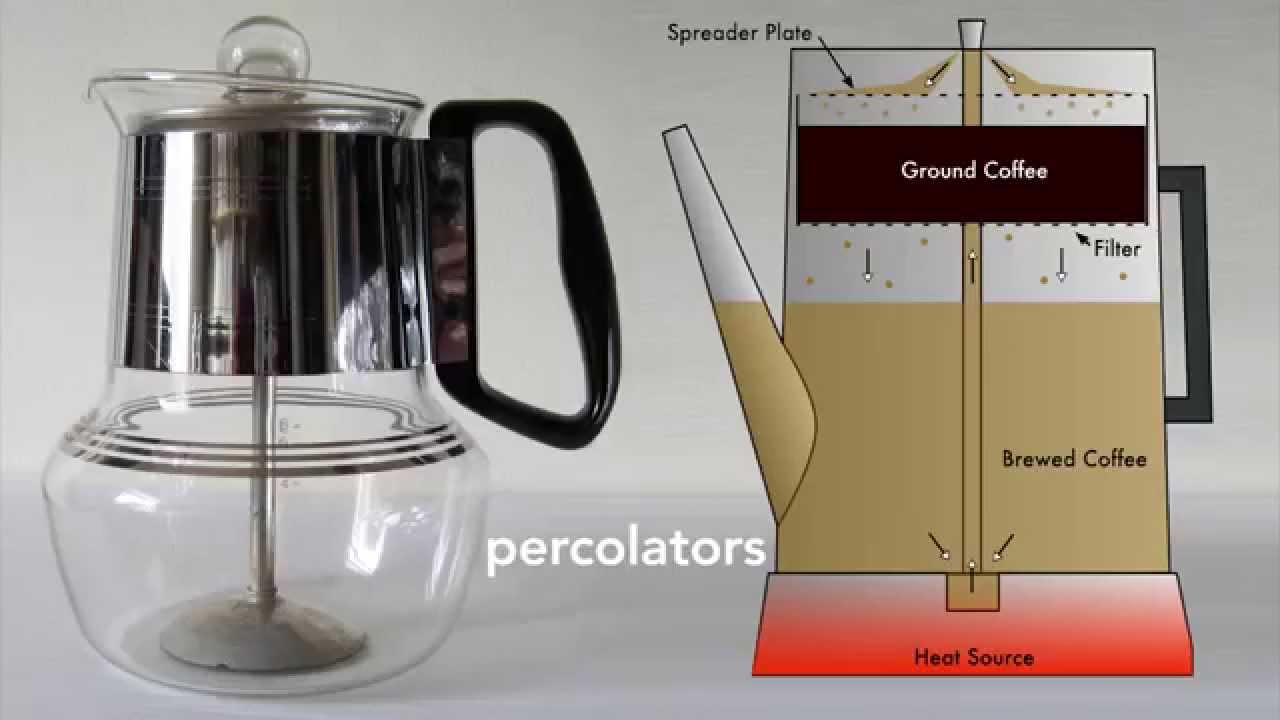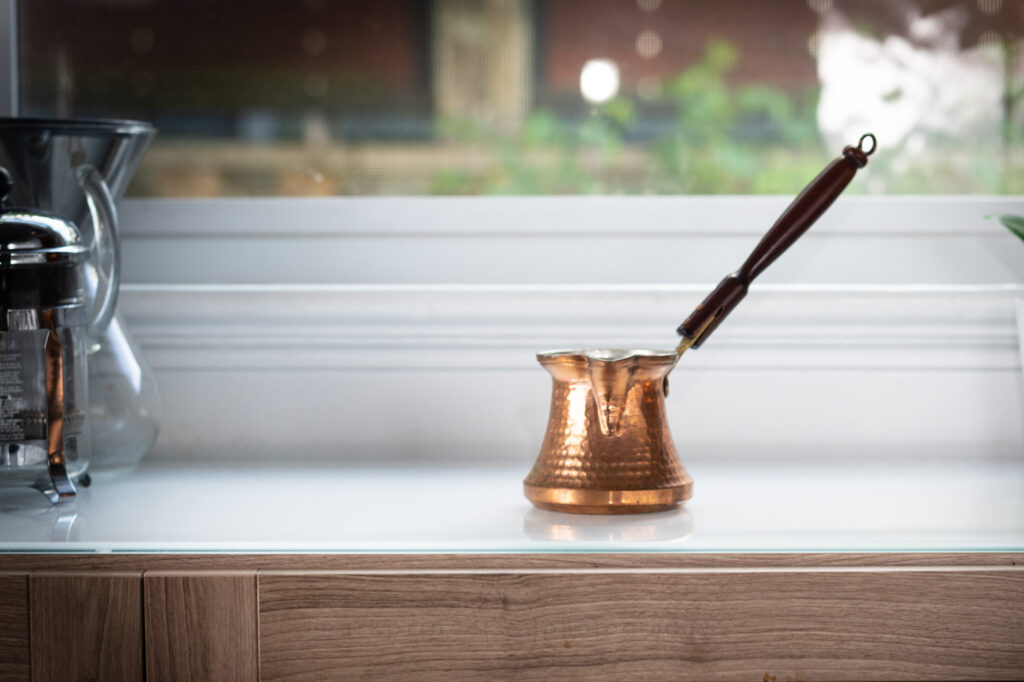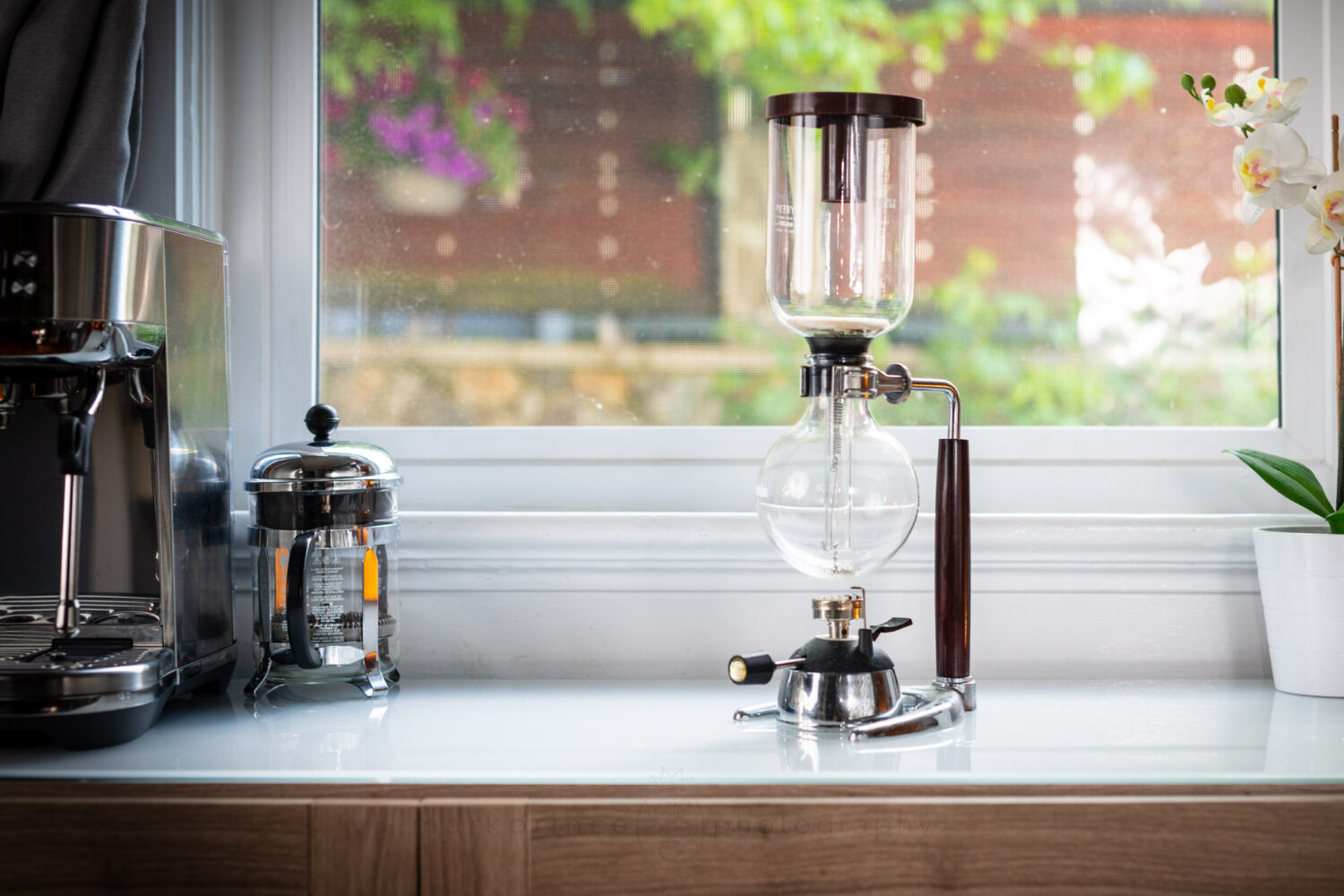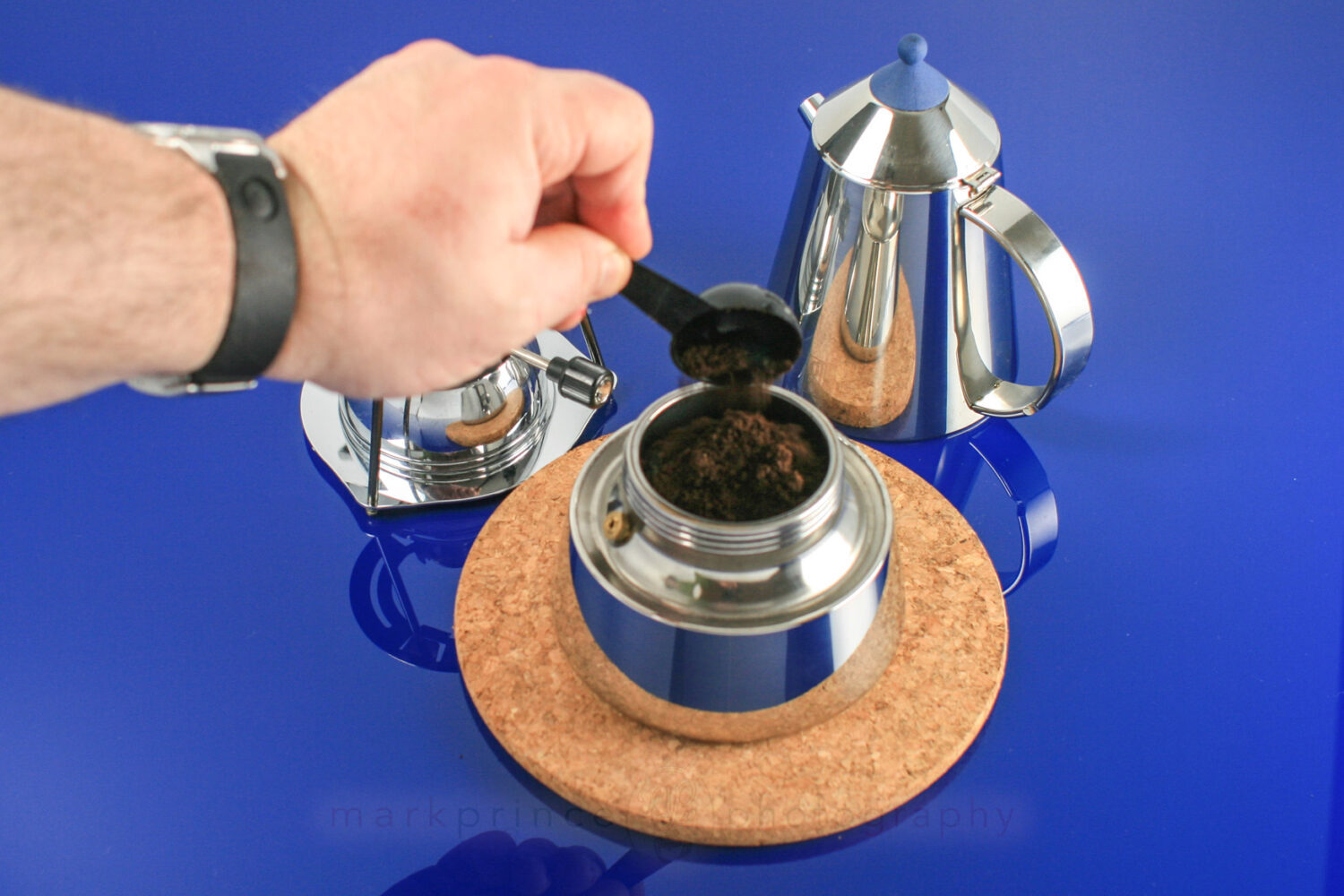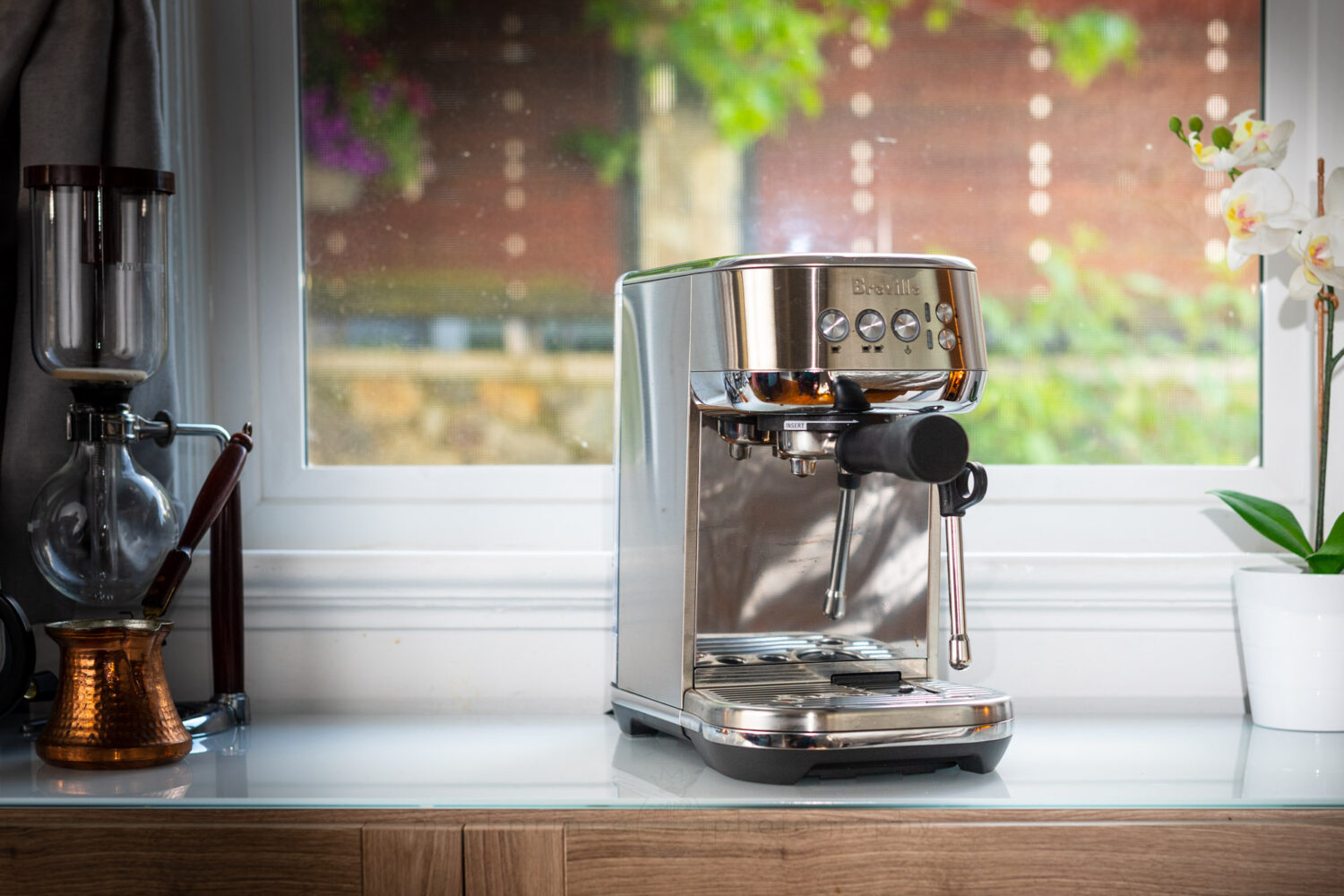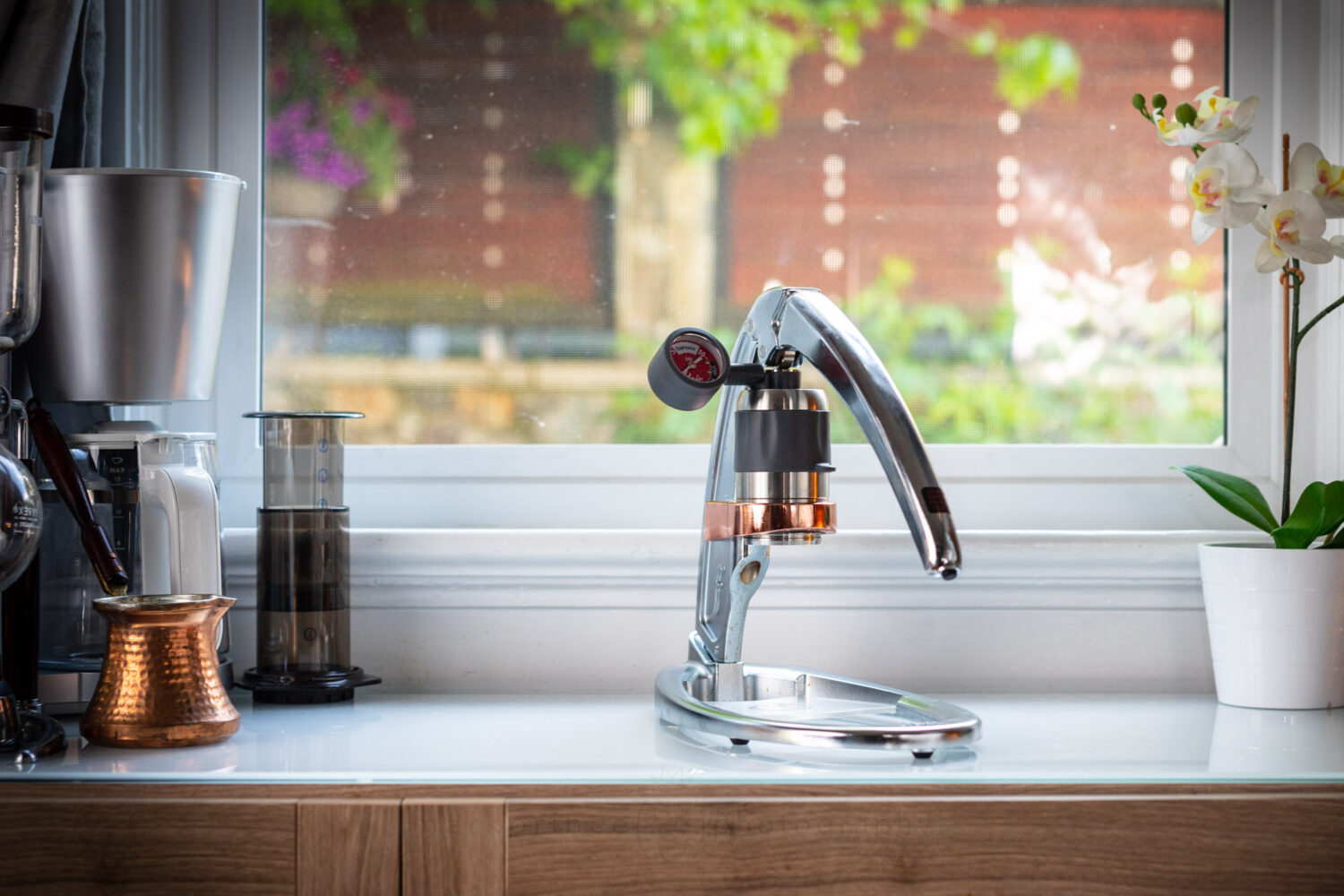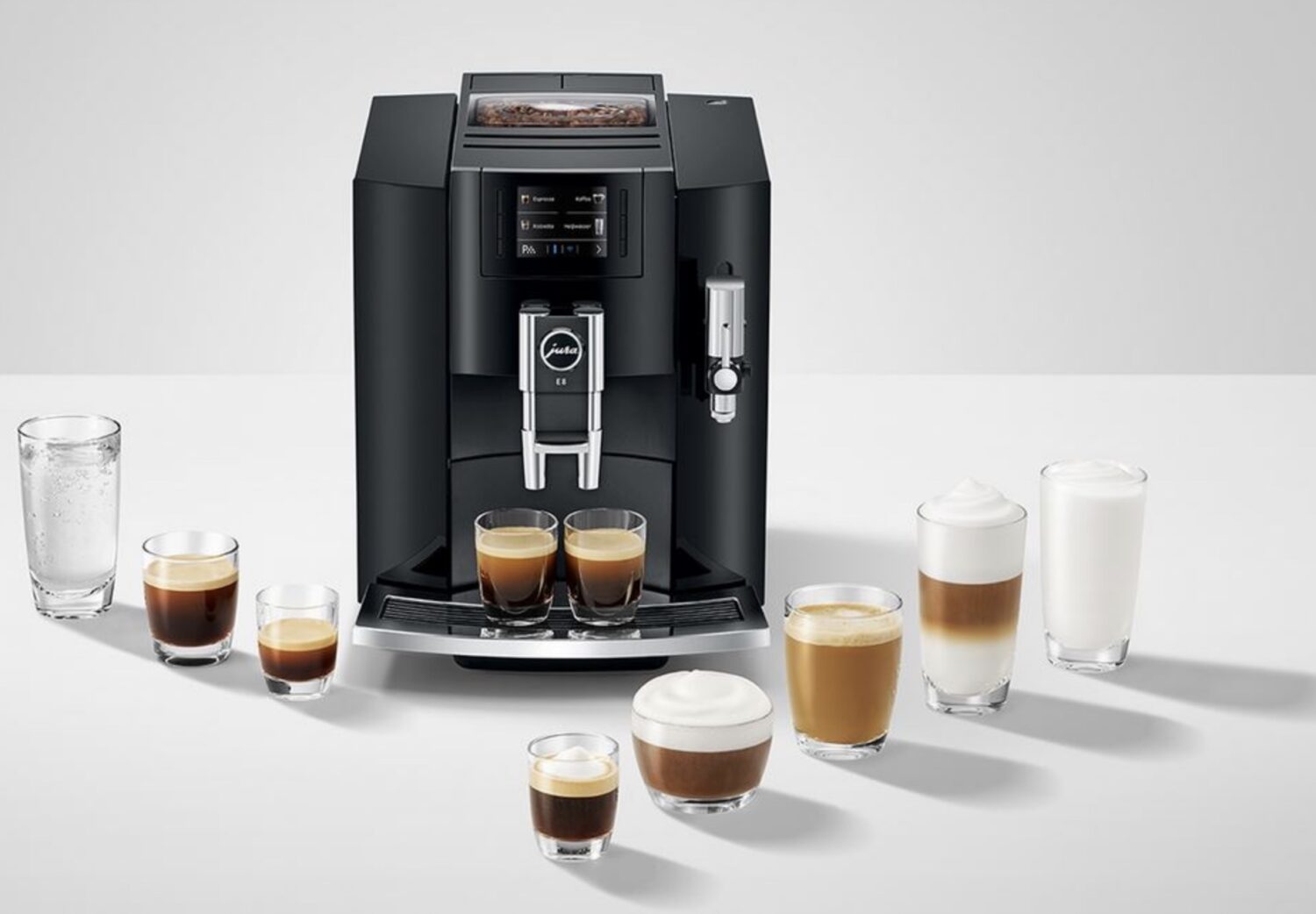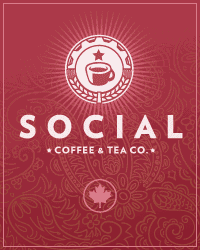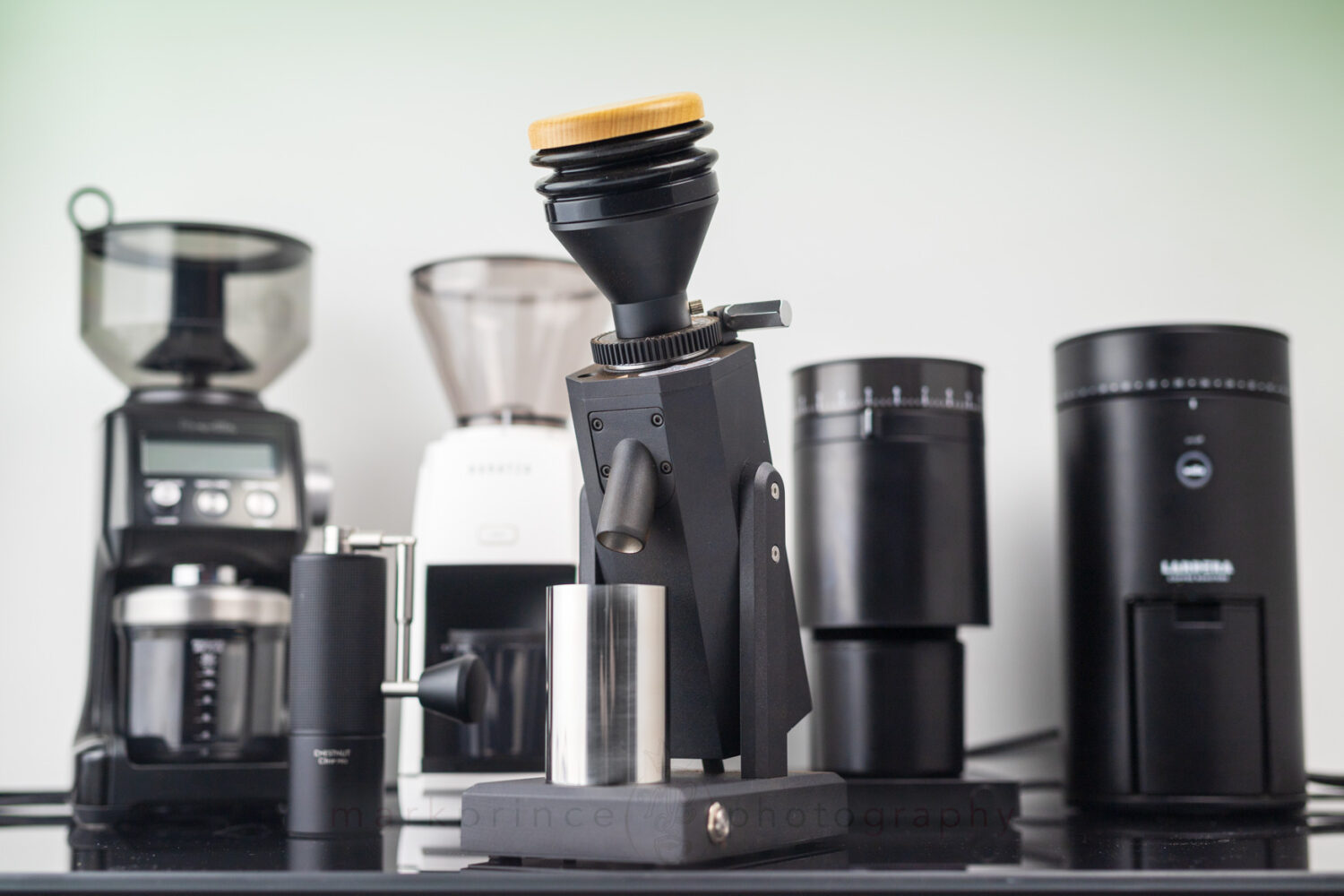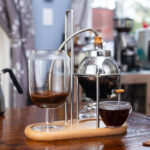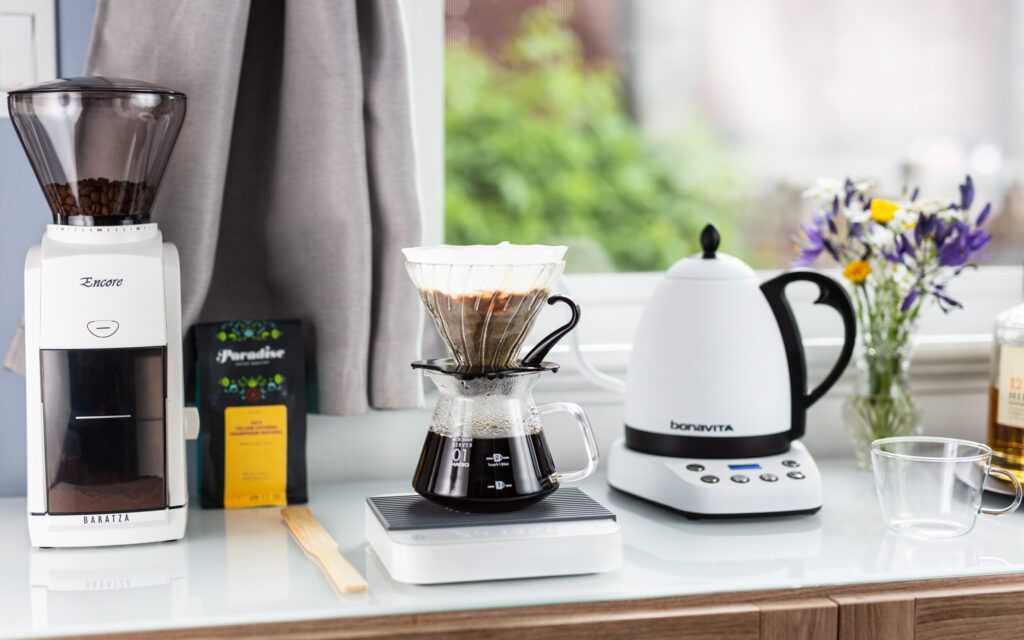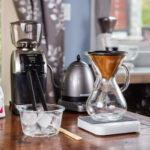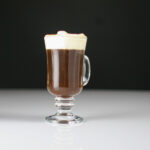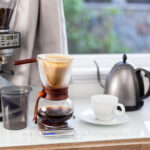Coffee is truly one of the world’s best discoveries and food items. We could go into length the role coffee played in advancing civilization beyond the land of nobles and serfs, but that is best saved for another article. Suffice to say, our collective society’s love for coffee is so vast, it has spawned literally thousands upon thousands of methods, designs, and produced and manufactured equipment to brew it.
To distill all these inventions, methods and processes down to a list of ten is by no means meant to diminish all that has come before in brewing coffee; but one has to start somewhere. Our editorial team poured over a wide variety of brewing styles and methods, and came up with a list of the ten most popular ways to brew coffee. Many of these choices encompass a wide variety of machines and equipment; a few focus on solitary brewing devices.
You’ve probably heard of more than a few of these, but very few people beyond the serious coffee nerdia amongst us have actually tried all ten. This guide’s purpose is to serve as an introductory guide to these methods and equipment, and in some cases provide some historical and cultural background. As our website continues to evolve, the guide will be updated to showcase new content, from How Tos and Guides to our Reviews, demonstrating examples in every category.
The Guide’s real purpose is to (hopefully) introduce some of you to one or two methods and brewing styles you may never have heard of. You may notice something else as well: this guide is very sparse on affiliate links (we did end up putting a few in, for context when we did not have local original content to point to). That’s because this Guide’s goal is not to get income from you. This Guide’s primary goal is to educate.
And with that said, let’s get into it!
Feature Guide Information
This guide started off life as a two part blog post originally published in July, 2022. It was amended and added to in 2023, and in March, 2024, was re-written and expanded upon to become a feature guide on the CoffeeGeek website.
Subscribe to
Coffee Pulse
Delivered twice monthly, CoffeeGeek's premier newsletter dives into a specific coffee topic each issue. The Pulse also occasionally features contests and giveaways. Subscribing is free, and your personal information is never shared.
By submitting this form, you are consenting to receive marketing emails from: CoffeeGeek. You can revoke your consent to receive emails at any time by using the SafeUnsubscribe® link, found at the bottom of every email. Emails are serviced by Constant Contact
The CategoriesTen Types of Coffee Makers
As mentioned in the introduction, it’s a bit hard to distill the thousands and thousands of brewing methods and equipment types used to brew coffee down to a list of ten, but we did manage to get it done. They include:
-
Pour Over
Everything from Chemex to V60, from no-bypass to immersion, if it involves pouring water over a bed of coffee, it's a pourover.
-
Auto Drip Coffee
Introduced to North America by Joe Dimaggio via the Mr. Coffee machine, auto drip has been around since the early 1960s, and continues today to be mega popular.
-
The Press Pot
The most enduring "immersion" brewing method, it's been around for nearly 70 years, and still features today as the brewer of choice for rom-coms.
-
The AeroPress
So unique, it truly has become its own brewing method, fosting world championships and instagram vids of coffee nerdia plunging away in the narrow confines of a jet flight.
-
The Percolator
If coffee ever had an enemy, it's gotta be the percolator, a method that actively destroys the flavour nuances of coffee.
-
The Ibrik
The centuries-old brewing choice of literally 100s of millions of coffee drinkers, yet very few of them reside in North America.
-
The Siphon Coffee Maker
The most popular brewing method in the USA and Canada from 1932 through the 1950s, siphon remains one of the best ways to brew coffee, ever.
-
The Moka Pot
When you say "espresso" in Italy or France, chances are people think of this device as the primary brewing method for that drink.
-
The Espresso Machine
The big kahuna of coffee brewing, and also the most expensive method to get into. For good reason: it's coffee down to the most concentrated way.
-
Bean to Cup Machines
A recent invention, these are the machines that handle all the complex tasks of espresso making, automatically. You just fill it with beans and water.
OnePour Over Coffee
Pour over coffee gets listed first because it’s one of the easiest and cheapest ways to get into quality coffee in the home. Pour over has seen a renaissance time of late, especially with companies like Hario and their popular V60 system, which also inspired a lot of other companies to develop pour over devices.
We have a featured article covering the History and Development of the Pour Over, as well as several detailed pour over How Tos on CoffeeGeek. These include one for the Chemex, one for Hario V60 Brewers, and one for using a Cloth Pour Over device.
Pour over isn’t new: Melitta Benz pioneered this brewing method well over 100 years ago. But pour over has seen a massive resurgence for several reasons: it seems slightly exotic (the most popular pour overs are from Japan); it’s hands on, fitting the whole “craft xyz” that people enjoy; and it’s quite inexpensive to get into.
- Inexpensive (unless you dive into limited edition devices, copper systems and hand-hammered filter holders)
- Easy to brew
- Easy to clean up
- Can create a better cup of coffee than auto drip
- Hands on, manual brewing
- Some systems have expensive filters
- Some do not like "paper" taste

TwoAuto Drip Coffee Makers
Mr. Coffee introduced automatic coffee making (that wasn’t a percolator) to an entire generation starting in 1972 in the USA, though it was by no means the first automatic drip coffee maker (that honor goes to Technivorm). But where Technivorm sold hundreds of units, Mr. Coffee, thanks in big part to Joe Dimaggio, sold millions. In a delicious bit of irony, the first Mr. Coffee machines brewed using water that was 200F, a standard that Specialty Coffee Association (SCA) certified brewers today have to meet.
We’ve reviewed many auto-drip coffee makers in CoffeeGeek’s history. One of the more recent ones is the Wilfa Performance, and we have several planned for this year, including the Zwilling Enfinigy, (hint – it’s going to make our best buy list too!), the Simply Good Coffee Olsen, the Breville Precision Brewer, and the OXO Brew 9 Cup Coffee Maker.
Auto drip coffee makers are designed for you to just add coffee and water to a machine, and the machine handles the rest: heating the water, delivering the water through a showerhead to ground coffee that sits in a paper (or metal or nylon) filter, which then passes through to a waiting carafe. They can brew between 500ml and 2 litres of coffee depending on the maker; some can brew smaller volumes, and a few can brew larger ones. Over the decades, additional features have been added to auto drip coffee makers, including, but not limited to:
-
Auto start timers (for waking up to coffee in the morning)
-
Dial a brew options, for longer or shorter brewing times
-
Insulated carafes for keeping the coffee hot without a hot plate
-
Bloom pause features, which first saturates the grinds, then pauses to let the ground coffee expand, or “bloom” before running the full brewing cycle
-
Built in grinders (blade and conical or flat burr) for having fresh ground coffee via a pre-set timer in the morning
Probably the biggest change came around 10 years ago when the SCA re-energized their auto drip brewer certification program. Companies could submit their auto drip coffee makers to the SCA for testing and if they passed SCA’s Gold Cup standard (here’s a PDF of the Gold Cup Standard), they got certified. The result is, consumers got better auto drip coffee makers.
This change was important because prior to the SCA’s certification program, most auto-drip coffee makers were… bad. They didn’t get water hot enough. They didn’t put any thought into how water was distributed over the bed of coffee. They didn’t give much thought to brew times either.
But today, there’s now dozens of machines out there that meet SCA standards. Some cost less than $100. Some cost over $300, like the Breville Precision Brewer, but that offers a lot more ability, including ice brewing modes, single cup brewing modes, and more.
- Very easy to use
- Easy to clean up
- Wake up to coffee
- Large batch brewing
- Keeps coffee hot for hours
- Hot plate models will “cook” coffee (make it taste very bitter)
- Can be expensive
- If you grind coffee the night before for automatic morning brewing, it won’t taste as good as fresh ground
- Needs internal descaling every 6 months to a year

ThreePress Pot Coffee
There’s something so romantic and cultural about using a press pot (also known as a French press). You see them used in movies all the time, especially in RomComs and Hallmark Channel movies, because they set a tone. Less hands on than pour over, but still hand crafted coffee. The beauty of the timeless look of a Bodum Chambord press pot says “we’re in for a relaxing afternoon”.
The bonus part is a press pot can make a fantastic cup of coffee, for that very moment you want coffee. The downside is, the coffee continues “brewing” and extracting bitters and astringents if you brew in a larger batch press pot and pour from it several times over an hour or so.
There’s a lot of different ways to brew with a press pot. We have a good starting guide on CoffeeGeek and one of our colleagues wrote an alternative method in this blog last year.
Back in 2009, CoffeeGeek’s owner pioneered another method for using your press pot, and and a few of us at CoffeeGeek are converts to these more advanced methods, since seeing that video years ago.
- Can brew some great coffee
- No filters to replace
- Lots of different ways to brew
- Some models can brew up to 1.5 litres
- Coffee continues to brew long after plunger is pressed
- Sometimes a bit messy to clean up
- Can be a bit dangerous (if you grind too fine, pushing the plunger is harder and can slip, splashing hot coffee and grounds everywhere)

FourThe AeroPress
Isn’t it fantastic that the AeroPress is so unique it has become its own brewing device category! The device was introduced on CoffeeGeek’s forums way back in 2005, with its inventor constantly answering questions about it from the get go. The most popular alternate brewing method for the AeroPress – the inverted brewing method – was developed on this website’s forums as well.
Since then, the device has become a world wide phenomenon. There’s even an AeroPress world championship, where new and different ways to use the brewer are explored and celebrated.
It really is a simple device: a tube, a plunger, a filter and a filter holder. Put the tube, with filter and filter holder assembled on your coffee cup, add ground coffee, quickly add hot water, stir, and add the plunger to the tube. Wait 30 seconds or so, then plunge down on the liquid, forcing the brewed coffee through the filter into your cup.
Of course, there’s a lot more ways to brew with the AeroPress. There’s an iced AeroPress How To on this website, as one example. We also wrote a full How To on the Inverted Method with the Aeropress. If you like reading about coffee history, we also covered how the inverted brewing method for the AeroPress was born.
- Very inexpensive
- Portable
- Adjustable strength of brew
- Many ways to brew with the device
- Many 3rd party accessories available
- Can be dangerous (pressing down on the plunger requires some force, and if things slip, watch out)
- Small volumes brewed (max is around 250ml)
- Is not an espresso maker (despite what the box says)

FiveThe Percolator
Look, we don’t want to spend much time writing about percolators. The reason is, they kill coffee. But we’ll walk through how they work.
Percolators became widely popular in the early 1950s because they could brew larger volumes of coffee with less actual ground coffee. That was their entire marketing appeal; well, that and they were convenience items. Big advertising posters would brag that percolators could produce the same volume of brewed coffee with half the ground coffee dose you’d use in a siphon coffee maker (which were the most popular brewers in the USA before percolators came along).
These machines could do this because they actually recirculated the brewed coffee liquid it produced back up to the (spent) ground coffee, sometimes several times, to complete a brew. And they did it with water that was at a rolling boil: 212F+. Ground coffee does not like full boiling water. It likes water that is no hotter than 204F. Above that, excessive bitters come out, and parts of the ground coffee are actually burnt for real.
Percolators are bad. Avoid.
- None at all
- Percolators hate coffee

SixThe Ibrik
What brewing device is used by literally hundreds of millions of people, almost none of which are in the USA or Canada? Why, it is the ibrik, aka the Turkish Coffee Maker. It is also one of the oldest coffee maker designs in continuous use to this day.
The ibrik is a wide-bottom pot with a very narrow top, and a handle attached to the side. Traditionally, they are made from copper, and often have a tin interior. It’s designed to be used over an open flame, or gas stove, but can also be used on most electric cooktops. Some also work on induction ranges.
The method is almost ceremonial; coffee ground to an almost talcum powder fineness, (and sometimes spices) is added to the pot. Water is added, and it is heated up. When it comes to a boil, foam builds up, and it is removed from the heat source, allowed to settle, then the process is repeated once or twice. The pot is then put aside for a minute or two as everything settles, then the contents are carefully poured out in stages to all the serving cups being brewed for (typically 2 or 4 small (150ml) cups). Almost all the ground coffee stays in the pot because of the pot’s design.
Though the coffee is ‘boiled”, it does not have the excessive bitterness and astringency that percolators deliver. That said, it is an acquired taste, and most coffee drinkers in North America have not embraced the brewing device.
Ibriks, in the past 15 years have been modernized to the point where there are automatic, powered versions available, and some of them have made it to these shores, including this model, which we got a chance to use last year (it works great!)
We have a How To on the Ibrik, if you’d like to check it out.
- Very unique tasting coffee
- Can be scented, flavored, and sweetened in the brewing pot
- Involves a ritual, which can be comforting
- You're using a very historical brew method
- At the end of the day, it is reboiled coffee
- Most grinders can’t grind fine enough for an ibrik
- To suit N. American tastes, sugar and/or spices need to be added
- Very hands on, requires care

SevenThe Siphon Coffee Maker
Before Auto Drip, before Percolators, the most popular brewing device in the United States was the siphon coffee maker (also known as a vacuum coffee maker, or vacpot), with dozens of manufacturers pushing the technology that drove their development, in turn selling millions of units. Then the percolator came along, and Americans chose convenience and cost savings over taste.
Thankfully, siphon coffee has seen its own resurgence and renaissance period since around 2000 or so. In the late 1990s, it was nearly impossible to find one at any store in the USA or Canada; by 2010, dozens of models, from the UK, Europe, Japan, and China were on the market, making siphon coffee reachable and approachable again. Today, there’s dozens of models to be found on Amazon and elsewhere.
Siphon coffee can produce a fantastic cup of coffee, and it looks like a science experiment while doing so. Brew times are very short (the longest part is the water heat up time; actual contact brewing time is usually under 75 seconds); the cups are exceptionally clean yet rich (thanks to cloth filters); and the coffee is brewed at nearly perfect temperatures.
There’s a deep love for siphon coffee on CoffeeGeek. To start you off, there is our main Siphon Coffee How To. In our blog, Allison Gainey wrote about discovering siphon coffee. We also covered siphon coffee in Japan, how to build a travel siphon coffee kit, and did a feature review on the most beautiful siphon ever, the Hario Nouveau.
- Best non-espresso coffee you can brew
- Very clean cups (when using a cloth filter)
- Short brewing times (especially if starting with pre-heated water)
- Fascinating to watch
- Allows for lots of customizing of the brew
- Harder to clean up than most other brewing devices
- If relying on cloth wick alcohol burners to heat water, can take up to 15 minutes or longer to brew
- Slightly fragile parts (some have broken the glass siphon tubes when removing the top part from the bottom on a siphon setup

EightThe Moka Pot
Around 45 million Italians cannot be wrong. Add to that another 35 million French people.
Because that’s the two countries where the vast majority of its citizens wake up and reach for the stovetop moka pot to make their morning coffee. In fact, most Italians and french refer to them as espresso makers, because in reality, that’s exactly what they are, at least until the definition of espresso was changed in the late 1940s.
Before Gaggia developed their lever espresso machine, and before Faema rolled out the E61 which introduced pump pressure and preinfusion to make the truly modern day espresso a reality, the beverage known as espresso was produced by harnessing the power of steam to push liquid water through finely ground coffee.
Which is exactly what a moka pot does. It is a 3 stage device: the bottom is the boiler area for water. The middle is a filter holding fine ground coffee, with an internal siphon stretching down into the bottom boiler. The top is where the brewed liquid comes out of, into an internal chamber sitting above (but separated from) the middle filter holding the ground coffee.
The entire device is sealed and screwed together after you’ve added water and ground coffee to it. Once placed on a heat source, the water in the bottom heats up, and starts producing steam. That steam forces the liquid water up to the filter chamber where it passes through finely ground coffee. That brew then passes through the filter up a pipe, where it spills out into the upper sealed chamber that holds the brewed coffee.
Here’s an “x-ray” look at how the Moka Pot works.
Moka pots are quite versatile. They are the main way Europeans make the Cafe au Lait, and are the primary way Cafe Cubano coffee is made, to provide just two examples.
We are way, way overdue for a proper Moka Pot how to on CoffeeGeek. It’s on our to-do list for 2024 and beyond.
- Brews a very strong, concentrated form of coffee
- Very inexpensive
- Produces a base coffee than can be used for other drinks (like cafe au lait, or a latte or americano)
- Fast brewing times
- Can produce a bitter cup of coffee
- A bit messy to clean up
- Lots of parts to deal with

NineThe Espresso Machine
This is the grand mack daddy of coffee brewing; more money, more development, more manufacturing has gone into espresso machine technology in the past 40 years than all other brewing methods combined. And it makes sense: espresso is the epitome of fast, complete extraction of all the good things ground coffee can deliver in a liquid into a cup. The modern espresso brewing method is the most controlled, intense — and to be frank, violent — method of extraction currently devised for coffee.
Modern espresso – that is, espresso brewed with 9BAR pressure (135psi) – is currently achieved with a lot of different technology approaches. The most common in the home today is the vibratory pump delivered pressure. A vibratory pump is a pump that has a diaphragm that expands and contracts rapidly to push water through a line at a high pressure. Commercial machines tend to use a rotary pump design – a pump with vanes that spin at high speeds, pushing water at high pressure – which is more consistent in terms of the pressure it delivers.
There are also lever machines that deliver the needed pressure to brew modern espresso, and where they used to come in just two varieties in the past — direct lever and spring piston lever — a third variety has recently made the scene: the ratchet lever Superkop.
Direct lever machines can be powered, like the La Pavoni Professional, or unpowered, like the Flair 58 or Cafelat Robot. With these machines, your hand effectively provides the (up to 9bar of pressure to brew the shot of espresso via a lever (or set of levers). Spring levers have internal spring mechanisms that you are “cocking” when pressing down on the lever. Letting go of the lever lets the spring do the work of pushing water through the bed of coffee. The Elektra Micro Casa a Leva (called the MCaL online) is one type of spring lever machine.
Espresso machines come in many varieties and functionality. The main four groups for powered, pump driven machines are known as manual, semi-automatic, automatic, and super automatic (the latter is covered below).
Manual machines rely on the user to supply the water pressure through a lever, but otherwise (usually) provide the water’s heat and storage.
Semi-Automatic machines provide the pressure and water heating, but the user controls the length of the shot via buttons or an activation lever.
Automatics do the same as semi-automatics, but also include volumetric (or timer) controls to automate the shot process: press a button and the machine will brew the shot, and shut off the shot pull after a pre-determined volume of espresso has been brewed.
Super-Automatics are very much their own breed, and thus get their own category.
Espresso is so complex and fascinating in taste and function, that literally dozens of major drinks known around the world start with a shot of espresso. We’ve covered many of them on CoffeeGeek, from the Americano, to the Lungo; from the Macchiato (both modern and traditional, to the Latte, and many more in between.
- The best extraction method currently devised for coffee
- One of the quickest extraction methods
- Extremely concentrated cup in flavor, aroma, and caffeine
- Produces a versatile drink to build upon
- Involves rituals which many people enjoy
- Most expensive entry into coffee
- Higher learning curve than any other brewing method
- Need to pull multiple shots if you want larger drinks
- Requires an expensive grinder
- Rapid degradation of quality in the cup if you let the beverage sit

TenSuper Automatics
Super Automatics, (more frequently referred to as Bean to Cup machines, thanks to Jim Hoffmann’s popular videos) are a recent invention but now moving into maturity. The machine technology was invented and introduced to the world by a company called Acorto, back in 1990 (founded by Duke Goss and Kyle Anderson, the latter of which went on to start Baratza and design consumer grinders). The Acorto Latte 990 was a $15,000 ($38,000 in 2024 dollars) machine designed to function in high volumes in retail fast food places like McDonalds, delivering freshly made espresso, cappuccinos and lattes with one touch of a button.
These machines were soon followed by other commercial designs, and in the early 2000s, home versions of super automatics started hitting the market.
A Super Automatic is an espresso machine that does everything needed to brew a shot of espresso, with just one button push. These machines have internal grinders, internal brewing groups, and even have systems to automatically deliver ground coffee to an internal portafilter, and remove spent coffee pucks after shot pulls, cleaning the machine to prepare it for the next shot pull. Many also feature automated milk frothing and heating systems to make the one button push include building drinks like cappuccinos and lattes.
For the longest time, the home variants of super automatics had design limitations that prevented them from matching the shot qualities of a manual, semi-automatic, or automatic machine, including very small portafilter sizes (usually well under 49mm in diameter), poor temperature control (shots were often brewed with water below 90C), and less than perfect after-shot cleaning (leading to residual spent coffee going rancid in crucial parts of the machine). The machines were also very complex, and very prone to break downs.
More recently, higher end home machines have been refined to produce better shots, use more coffee per shot, and have much tighter control of the water temperatures used. Some, like the Jura Z10, (which we will be reviewing soon on CoffeeGeek) even have the ability to do cold and iced brews, right inside the machine. But you will pay for the convenience and quality: the best home super automatics today usually start at around $3,000 or more.
Also, Breville has, in some ways, re-invented the bean to cup machine category with their Oracle and Touch espresso machine series. Breville’s take is to build super automatic “convenience” around a traditional espresso machine, which results in superior espresso output.
- Can brew a complete shot of espresso with one button push
- Completely hands off operation (until you need to clean)
- Higher end machines can build milk drinks as well
- Some machines are built around traditional espresso machines and deliver true high end espresso
- Current day machines much better than 10 years ago
- Most expensive entry point into coffee
- With the exception of Breville's bean to cup machines, most cannot approach the shot quality of hands on traditional espresso machines
- Extremely complex machines, can have frequent break downs and require expensive maintenance

Coffee MachinesConclusion
As we stated near the top, this is by no means a definitive list of all the different major categories of coffee brewing devices available today. We’ve left out cold brew devices, capsule brewers (that one’s on purpose: they are unfriendly to the environment, and you’re paying up to $50/lb for the coffee), and many more brewing categories.
The above 10 represent what are probably the most popular and common brewing methods found today (again, with the possible exception of capsule brewers). If you haven’t tried all of them, consider diving in on one or more of the unfamiliar methods to discover a wider range of coffee enjoyment!
Meanwhile, our comments are open for a while, and we’d love to hear from you on this Guide.


Support CoffeeGeek
If you enjoy and learn from this resource, please consider making a one time or recurring donation to help support our work and fund purchases for future reviews.
Subscribe to
Coffee Pulse
Delivered twice monthly, CoffeeGeek's premier newsletter dives into a specific coffee topic each issue. The Pulse also occasionally features contests and giveaways. Subscribing is free, and your personal information is never shared.
By submitting this form, you are consenting to receive marketing emails from: CoffeeGeek. You can revoke your consent to receive emails at any time by using the SafeUnsubscribe® link, found at the bottom of every email. Emails are serviced by Constant Contact















